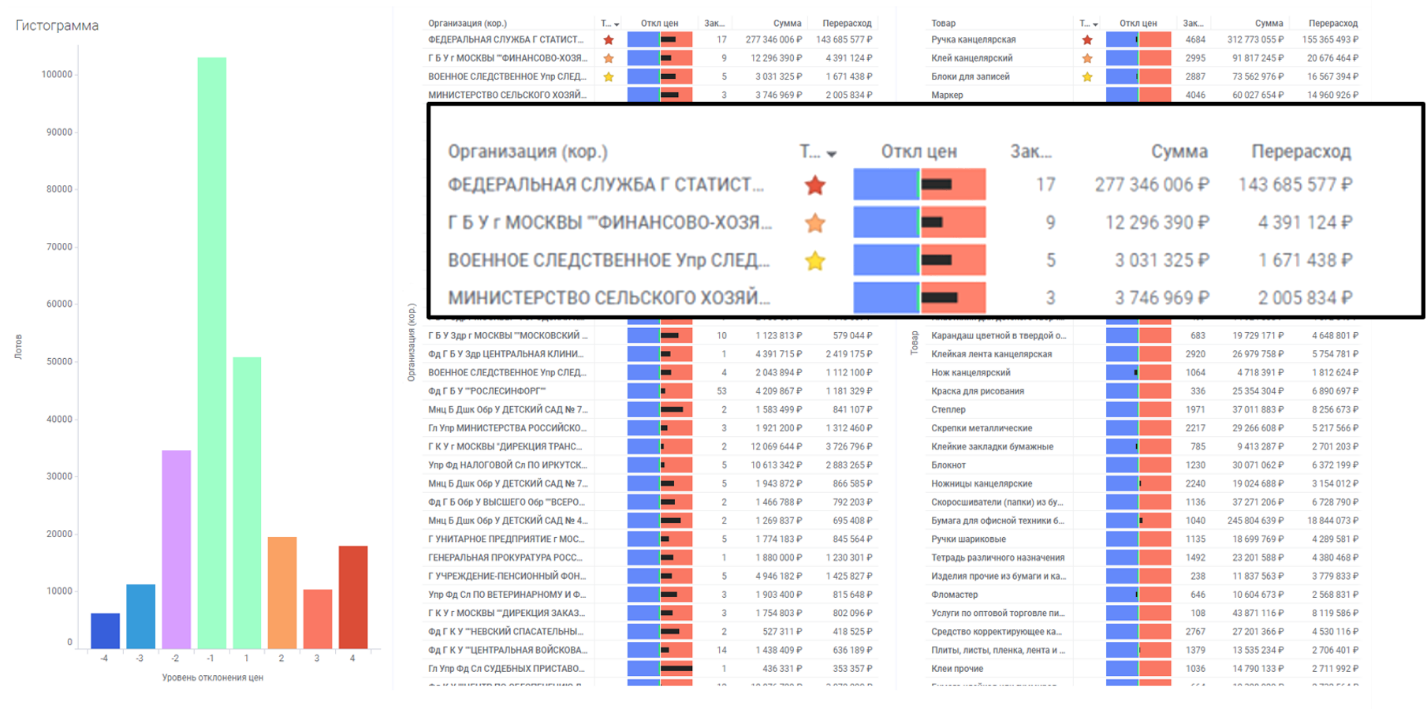Organizations often make purchases at unreasonably high prices, because they do not have enough time and tools to calculate the correct cost and find profitable offers. Softline digital has developed a service to identify the fair price of goods and automated search for suitable tenders.
- What is the service for?
- What is meant by justice?
- Search methodology
- How does the model understand the tender descriptions?
- For whom?
- Results
- Benefits
What is the service for?
When a customer company announces a tender, it is interested in choosing a supplier with the best conditions for itself. Usually, auditors are engaged in the search for suitable tenders, who manually review and evaluate the terms and cost of purchases. Sometimes, in order to choose one suitable tender, you have to spend several working days, despite the fact that new offers appear hourly.
The service helps auditors instantly analyze all available tenders for whether the purchase price is overstated in them. Thus, the business saves the working time of employees and can direct it to more intelligent tasks, and also increases the efficiency of the search, and hence the chances of a profitable deal.

What is meant by justice?
I magine that you need to purchase ballpoint pens for a company. Based on the data of marketplaces, a fair price can be called a range from 5 to 15 rubles, if you are interested in ordinary pens.
Hundreds of offers for the supply of pens can be found on tender sites, but in some of them the price per piece can exceed even 150 rubles, which is obviously not a fair price.
Nevertheless, state organizations often do not set marginal prices and do not have recommendations for calculating the regulatory cost of purchases. As a result, goods are purchased at incorrect prices and in large quantities, simply because there is no liability to overestimate them.
Methodology for determining the fair price
The service developed by Softline Digital collects information from two types of sources: the tender site and marketplaces. The goods appear in the form of text descriptions: lot names, amounts, dates, purchase codes. In addition, attached documents can be analyzed additionally: scans, Word, Excel, PDF documents. They are fed to a neural network, pre-trained in the Russian text corpus, and turn into a vector description of a product, a set of numbers that will be unique for each product.
To make a forecast for a product, a quantile regression model is used, it predicts the price of a product from its vector description. With its help, you can get not just one number, but a range of numbers. For example, when determining an adequate purchase price for a ballpoint pen, it is not necessary to look for offers where it will cost strictly 10 rubles.
Depending on the market situation and analyzing all offers, the model offers a price range that, according to its calculations, will be adequate.
If the price does not lie in this range, then it is overstated or underestimated critically, which means that the companies that offer it are most likely not suitable. The result of the analysis is formulated as:
- The purchase is irrelevant;
- The purchase is relevant, the relevance rank is assigned;
- Manual verification is required (insufficient data, low confidence assessment, unreadable documents).

How does the model understand the tender descriptions?
To date, neural networks of the transformer family are popular in data science. They cope well with the tasks of text analytics, text generation and summarization. By turning words into vector descriptions, creating dictionaries of neural networks and building a logical sequence, they recognize not only words, but also whole phrases, accurately reading semantics.
The following Python scripts were used to create the system:
- converting documents from "doc" to "docx";
- search for relevant tables (fuzzy keyword search);
- search for the necessary columns in the table (fuzzy pattern search);
- processing nested subtables;
- processing of values (formatting, division into names and attributes is a NER model).
For whom?
The service for determining a fair price and searching for tender purchases is intended for large companies, corporations and holdings that arrange tenders on any trading platforms: public procurement, RTS-tender, Sberbank-AST, Zakaz RF, ETP RAD and others. The system can be scaled to all types of goods from paper clips to server hardware components that have a text description.
Results
This system was tested during a hackathon organized by the Accounts Chamber of the Russian Federation under the leadership of its chairman Alexei Kudrin.
According to the results of the pilot, the analysis of tender purchases showed that in 2020, in 20% of purchases made by state organizations, the cost of goods was overstated. Of these, 20% were exceeded by more than 2 times.
That is, 10% of the budget could be easily saved or these funds could be used for other important purposes. These results were validated and confirmed by the auditors of the Accounting Chamber.
For example, in 2020, the state statistics service for the nearest population census set a purchase price of more than 100 rubles for a ballpoint pen. Moreover, the calculated adequate price is about 20 rubles. As a result, about 100 million rubles were allocated for the purchase, of which only 20 million were spent, and the remaining 80 million were in the block. In the system, you can make a rating of organizations that make purchases at prices higher than fair, as shown in the figure:

Benefits
The fair price analysis system based on public procurement data allows:
- Reduce the cost of searching for tender purchases;
- It is faster to find tender purchases that arouse commercial interest;
- Save budget funds;
- Optimize budget planning.
To get acquainted with the service, leave a request for demo access.









